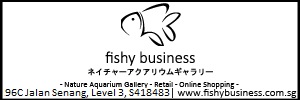Anybody care to clear the mystery of the follwing article?
I finally bought a copy of "Nature Aquarium World" by Amano. It is a
beautiful book, but I don't understand some of the data he gives for his
tanks. I normally calculate CO2 levels (mg/l) from pH and kH
measurements, using a table that George Booth incorporated into an article
he wrote based on the Dupla 10 Golden Rules. The CO2 concentrations that
I obtained from this table when I used the pH and kH data in Amano's book
do not come close to the CO2 values that Amano gives. For example:
Tank # kH pH CO2 (mg/l) CO2 (mg/l)
Amano's data George's table
29 1 6.8 16 5
44 1 6.8 23 5
41 1 7 19 3
1 2 6.8 16 9
7 2 7 16 6
43 2 7 23 6
28 3 6.8 17 14
31 3 7 13 9
22 3 7 19 9
It seems pretty clear that Amano consistently gets higher CO2 levels than
I would expect from George's table. Also, Amano's CO2 levels seem to be
almost independent of kH/pH: for example tanks 22 and 41 both have pH=7
and CO2=19, but have kH 3 and 1, respectively.
I believe that George's table is reliable, so does anyone have any ideas
why Amano's values disagree so strikingly with the table? Are CO2
concentrations difficult to measure?
Plant Physiology by Taiz and Zeiger











 Reply With Quote
Reply With Quote
Bookmarks